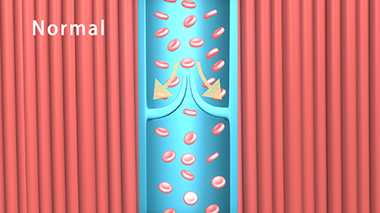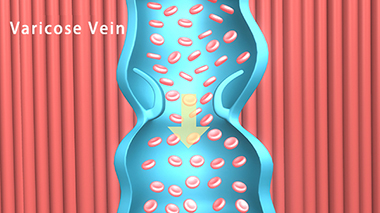What are varicose veins?


They are abnormal, dilated veins. Varicose veins refer to tortuous, larger ones, whereas spider veins refer to the smaller dilated veins that are near the surface of the skin.
Often these are caused by malfunction of the valves in the veins. Healthy valves ensure a single direction flow of blood in the veins from the feet back to the heart. Failure of these valves allows backflow (venous reflux) which causes pressure build-up and bulging of the veins.

What causes varicose veins?
Varicose veins are due to weakness in the wall of superficial veins, and this leads to stretching. The stretching causes failure of the one-way valves inside the veins. These valves normally only allow the blood to flow up the leg towards the heart. If the valves leak, then blood can flow back the wrong way when standing. This reverse flow (venous reflux) causes increased pressure on the veins, which bulge and become varicose. They may also be caused by occupations that require prolonged standing or weight bearing which increase pressure on the leg veins. They often appear during pregnancy and while they may become less prominent in the weeks after delivery, they tend not to disappear completely. Varicose veins often run in families (the precise form of inheritance is not well understood) and as you get older, they are more likely to occur.
How common are varicose veins?
Approximately 50 per cent of the population has some form of venous disease, and varicose veins affect up to 15 per cent of all adults. Both men and women can get varicose veins.

What problems do varicose veins cause?
The raised pressure inside the veins may give rise to aching, throbbing, itching, swelling of ankles and leg cramps. As normal blood circulation is affected – and if left untreated – complications like eczema, brown discolouration, ulceration, clot formation, bleeding, infection and even skin cancer, etc...
The information provided on this website is for educational purposes only. Please consult your physicians before considering treatment or for detailed medical advice. (Information provided by Dr. Chad TSE Cheuk-Wa)




